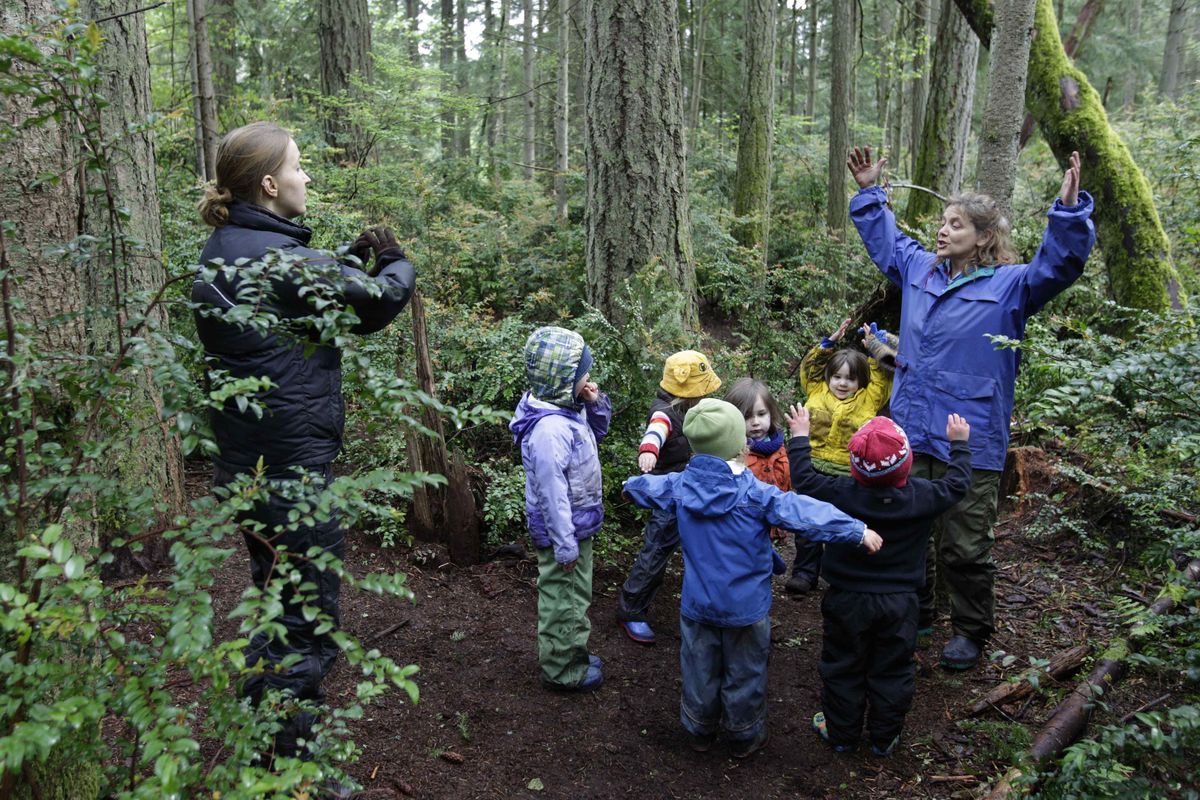‘Forest kindergartens’ taking root
Programs help overcome ‘nature-deficit disorder’

VASHON ISLAND, Wash. – When they’re outside, the children in Erin Kenny’s class don’t head for cover if it rains or snows. They stay right where they are – in a private five-acre forest. It’s their classroom.
They spend three hours a day, four days a week here, a free-flowing romp through cedar and Douglas fir on Vashon Island in Puget Sound.
The unique “forest kindergarten” at Cedarsong Nature School is among several that have opened in recent years in the U.S., part of a movement that originated in Europe to get kids out from in front of televisions and into the natural world.
“American children do not spend much time outdoors anymore,” Kenny said. “There’s a growing need and an awareness on parents’ part that their children really need to do more connecting with nature.”
In addition to Kenny’s, at least two other schools have been established: one in Portland and another in Carbondale, Colo.
Kenny opened Cedarsong’s doors in 2008, starting out with five children. She plans to expand the school to five days a week next year. She charges $100 a month for one day a week, $200 for two days a week, $300 for three days a week.
Kenny said there’s a growing waiting list.
The school is located in the quirky Seattle bedroom community kept artificially rural by the lack of roads, and county land-use policies.
Cedarsong is basically a camp. It has three cabins, one being a library, another for equipment and the last one for a compost bathroom equipped with child seats (although sometimes the kids prefer to just urinate in selected spots in the forest).
The camp also has trails and play spots, such as Fairyhouse Land, where there is a forest hut covered with ferns.
It also has tables to make mud cakes, buckets and rakes to scoop mud, a small drawer to keep the children’s discoveries (fiddlehead ferns, feathers, lichen and insect-chewed leaves) and a spot for campfires. A plan for an outdoor kitchen is being drawn as well.
The kids munch on what the forest provides, calling leaf buds “forest candy.”
For Kenny, the preschool is a culmination of years of working with children and a love for the outdoors. She used to be a lawyer, but was inspired to start her school after reading Richard Louv’s book “Last Child in the Woods.”
In the book, Louv coined the phrase “nature-deficit disorder” to explain a lack of connection between the country’s children and nature. He argues that the decrease in nature dwelling leads to a rise in childhood obesity, attention disorders and depression.
At such a young age, Kenny said, children shouldn’t be taught complicated subjects. They shouldn’t be force-fed math or language. She said she’s often asked what children learn at her school. Her reply is that these children are well versed in basic environmental science.
As time goes by, Kenny said, there will be more evidence that these schools are appropriate models for children.
Kenny said children should be left to explore by themselves. She and her assistant teacher use the children’s natural curiosity as opportunities to teach. In her school, the children decide what they’re going to do each day, not the teachers.
“They tend to retain the information better because they’re actually touching and feeling and tasting the lessons,” Kenny said.
One of the key lessons taught here, however, is not for the kids, but for the parents.
To be in this school, parents must know how to appropriately dress their children for all kinds of weather. That’s particularly important in this part of Washington, where rain is nearly constant in the winter and showers and sun alternate seemingly minute to minute in the spring.
So, even in May, kids arrive with rain pants, raincoats, mittens and gloves. If the weather heats up, the layers come off.
Mom Meghan Magonegil said she wasn’t sure at first whether an all-outdoor school would work.
“Once we got here, I would pick Finn up and he’d be wet and muddy and smiling and happy, and I knew it was perfect,” she said of her son.